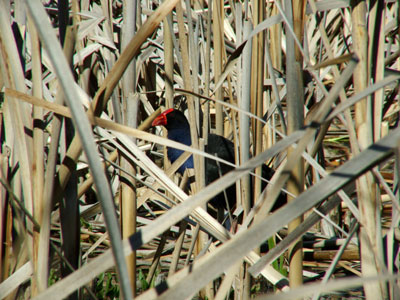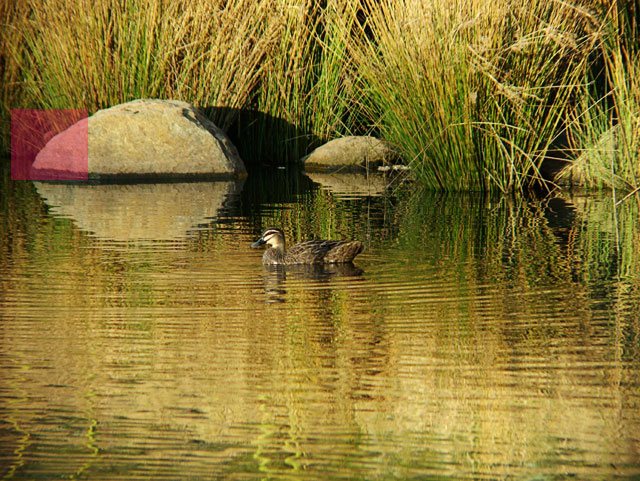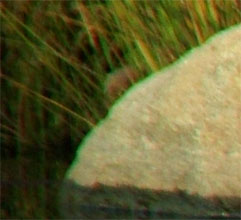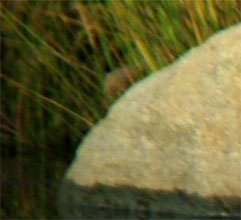What does it come with?
The lens comes with a nice foam padded lens carry bag, front and rear lens caps (push on type) and two step-up rings one from 52mm to 62mm and another from 58mm to 62mm. The front lens cap is a bit soft and difficult to put on / take off sometimes. I might have to replace it with an 82mm clip-in lens cap.
What is needed to use it with the S7000?
You will need a female 52mm to male 55mm adapter tube. The Raynox tube is called a "RT5255".
The DCR-2020PRO comes with two step up rings, one from 52mm to 62mm and another from 58mm to 62mm. You use the 52mm to 62mm to attach the 55mm to 52mm adapter tube to the lens. The 55mm male threads screw into the front of the S7000.
How much magnification with the S7000?
The lens provides 2.2x magnification to the dimensions of the image. Some retailers and manufacturers give their lenses a 2x rating based on the increase in area of the image, but this is just plain misleading and results in buyers getting a 1.4x teleconvertor marked as 2x. With the Raynox, everything you see is basically 2.2x bigger than without it.
Attached to the S7000, the DCR-2020PRO takes total magnification to 13.2x which is the equivalent of a 462mm tele lens on a 35mm SLR.
How much of the zoom range is usable?
On the S7000 you can only use this lens on full zoom (6x). Anything less will result in vignetting (darkening of the corners of the frame).
What is the minimum focusing distance?
The minimum focusing distance is about 4.5m on the S7000 with the DCR-2020PRO attached. At full telephoto without the DCR-2020PRO the S7000 can focus down to about 1m.
By comparison, the minimum focusing distance with the Fujifilm TL-FX9 1.5x teleconvertor is about 2m. The take home message is that if you want the largest image possible, do not use a teleconvertor but just get closer to the subject. It is in circumstances where you cannot get closer to the subject that teleconvertors are useful.
Can I use filters with it?
Yes - it has 82mm front threads. However, most 82mm filters are expensive, much more so than the 55mm filters we are used to buying for the S7000. In theory, you could use filters between the adapter tube and the rear of the lens but moving the lens even a small amount forward will result in vignetting even a full zoom.
Is it any good?
Yes. It has a nice crisp sweet spot in the middle of the frame which makes it fantastic for bird and wild-life shooting where the subject is centre frame.
For a 2.2x teleconvertor it is fast. I was unable to detect any light loss when using the convertor compared to the S7000 on full zoom (6x). This is probably largely due to the big 80+mm front objective on this lens.

Chromatic aberration
Chromatic aberration off-centre is noticeable with this lens.
You can use Panorama Tools to minimise chromatic aberration distortion using the following correction coefficients:
| channel | a | b | c | d |
| red | 0 | 0 | 0 | 0.9980 |
| green | 0 | 0 | 0 | 1 |
| blue | 0 | 0 | 0 | 1 |
For images that contain a lot of green and straw colour, the following coefficients seem more suited:
| channel | a | b | c | d |
| red | 0 | 0 | 0 | 0.9975 |
| green | 0 | 0 | 0 | 1 |
| blue | 0 | 0 | 0 | 0.9975 |
Take for example, the following image:

If we take a closer look at the rock we see significant green fringing.

After applying the above coefficients, the green fringing is dramatically reduced and the colours in the picture are clearer.

Stacking Fujifilm TL-FX9 and Raynox DCR-2020PRO
I have performed some preliminary tests stacking the Fujifilm TL-FX9 and Raynox DCR-2020PRO. This involves putting the TL-FX9 on the S7000 first and then adding the DCR-2020PRO on the end of the TL-FX9. The TL-FX9 has no front threads so the body of an unwanted 62mm filter needs to be used. You will need to machine some material from inside the front of the TL-FX9, break out the middle of the unwanted 62mm filter and then epoxy it into the front of the TL-FX9.